Open Your Mind
Theatre Space, Performance, and Audience
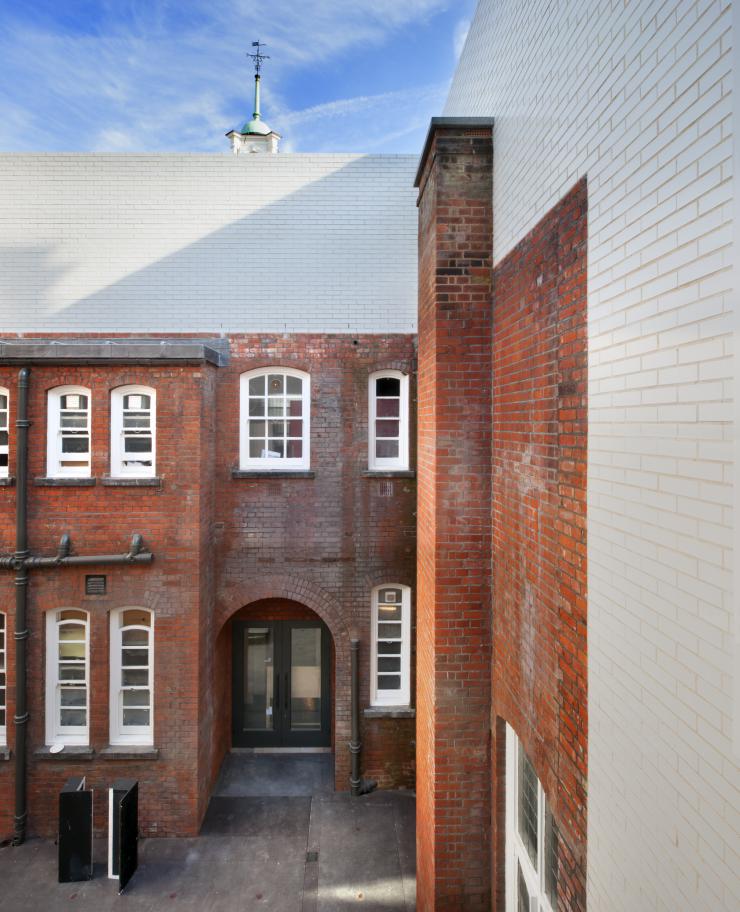
It’s a hot day in August 2016 and I am cooling off in the Courtyard, Battersea Arts Centre’s new outdoor theatre that is tucked away in a precinct within the centre’s huge building, as artistic director David Jubb passionately describes how the new space has come into being.
This isn’t the first time I’ve been in the space. I was previously here to see the Courtyard’s inaugural show Extravaganza Macabre, a spoof Victorian melodrama by the energetic and raucous theatre company Little Bulb, but today there is an eerie calm and almost ghost-like presence in the empty auditorium. It belies the origins of the space, which perhaps began back in 2007 with a rather embarrassing theatrical mishap for Jubb.
At the time Jubb, in Brazil on a trip researching Latin American theatre, walked into Teatro Oficina in Sao Paulo and had an experience that would influence his ideas about theatre from that day forward. He was late for the theatre’s six-hour Brazilian political play and the only entry to the auditorium was through two big metal doors that featured heavily in the show. With no choice, Jubb’s mortification at such a prominent entrance increased when one of the doors fell off in his hands. With all eyes upon him, including those of the actors, Jubb was thunderstruck. He didn’t speak Portuguese, but clearly, by the urgent physical gestures from an actor dressed as a soldier, he was meant to do something. But what? When Jubb finally worked out he had to put the door back on its hinges in order for the show to go on, the said actor then showed Jubb to his seat via a ladder. Despite the encounter making him “feel like bursting into tears,” it helped form Jubb’s belief that an audience is part of or should be part of every show they see. The experience also helped Jubb consider how the interior design of a theatre can play a prominent role in influencing how an audience, by being subtly invited to physically cross and/or interact with the playing space, can participate in the performance.
Teatro Oficina was designed by Lina Bo Bardi and mirrors the shape of a narrow street after and in memory of the theatre’s creator Zé Celso, who when he was on an acid trip and running from the police, found himself trapped against a solid wall. How the theatre merges into the city block culture on the street, influenced Jubb’s work with theatre architects Howarth Tompkins in remodelling the Courtyard’s space from an old smoking den for staff into a workable performing area. The Courtyard is a small, but tall and narrow affair. Halfway up the auditorium in the “circle,” the audience has the ability to watch the show and the audience in the stalls below at the same time, a concept that Jubb is very much taken with as it increases human interaction and is a spectacle in itself. And up at the very top, in the narrow gallery, the audience can not only see the action and the other audience members, but are also close to the sky and can see some of the rest of London too.
Architectural immersion, i.e., fitting new designs around the found history of the original building to hold on to and even highlight history and a building’s previous uses is also integral to the historically layered and ghost-like feel of the Courtyard.

Audience and actors also use the very same entrances and exits. This idea is borrowed from Jubb’s experience with that door in Sao Paulo. And by keeping the sense of “wrap” that a courtyard naturally has and refusing to knock down walls and enlarge the playing area, the small space, like Oficina, brings its audiences intentionally knees up against the performers and makes interaction with audiences not just possible, but highly probable. During Extravaganza Macabre actors were in audiences’ laps, they banged into audience members as they rushed around on stage, there could be no pretense of a fourth wall, and when things went wrong, the audience could choose whether to carry on the theatrical illusion with the actors or to disturb it.
Architectural immersion, i.e., fitting new designs around the found history of the original building to hold on to and even highlight history and a building’s previous uses is also integral to the historically layered and ghost-like feel of the Courtyard. For example, red brick laid in 1893 joins up against new white tiles and the effect is reminiscent of the innards of old Victorian shops, though they make Jubb think of “an infinity-edge swimming pool.”
At 123-years old, Battersea Arts Centre was once Battersea’s Town Hall and its history surrounds the Courtyard audience and pays homage to it. The East wall (looking towards the playing area) used to be the Council’s Sanitary offices, another wall supported the kitchens and ladies loos. Beyond that was a long-since-gone lift shaft and huge kitchen.
But Jubb is also concerned about how the public perceives, or is invited to perceive a theatrical space, and these concerns have motivated not just the internal design of the Courtyard, but what surrounds it. “When you go into a theatre it is sometimes very clear where you go, what you do, where you sit, how you behave and it is all managed and regimented and some people like that and that’s fine, but for me there’s something about going into a space where there is a risk: you have to fix a door, you have to negotiate your way around an experience,” says Jubb. His thoughts mirror some of Bo Bardi’s own, for whom the ability to explore is the key to experiencing space: “Architecture is created, ‘invented anew,’ by each man who attempts her, who roams her space, climbs a stair, rests on a balustrade, lifts his head to look, open, close a door, who sits down or gets up and makes intimate contact with —and at the same time create ‘forms’ in—the space.”
Getting to the Courtyard follows this concept. You have to leave BAC’s foyer, feel your way around a corner, walk down a corridor, all the while wondering what is behind this door? where does this passage lead?, pass workshops and set and lighting stores with huge glass doors before you stumble, as if by accident, on the Courtyard. BAC doesn’t over-sign and you feel a sense of ownership that as a member of the public that you can go just about anywhere in the building. But what’s important is that you are allowed to think this, allowed to think, is this public territory? should I be here or not? And experience that thrill.
Many people in many different capacities from all sorts of backgrounds have wandered through BAC, so it is interesting to ask, how can the Courtyard reach out to different audiences, as well as offering audiences new experiences? “Cultural organizations need to think carefully about how they do their work. We have to make sure we don’t just do our work in here,” says Jubb emphatically gesturing at the Courtyard, “but outside.” An implication, perhaps that no matter the design of the new theatre set at the heart of BAC, to get to it there is still the barrier of BAC’s imposing front door, which is still reminiscent of the Edwardian era and British power and might be an entrance that some people will never pass through.
Can we get to a stage where audiences, using the tools at their disposal given to them by the architects and theatres, are able to create their own auditorium spaces and set the physical parameters with the actors for the performance?
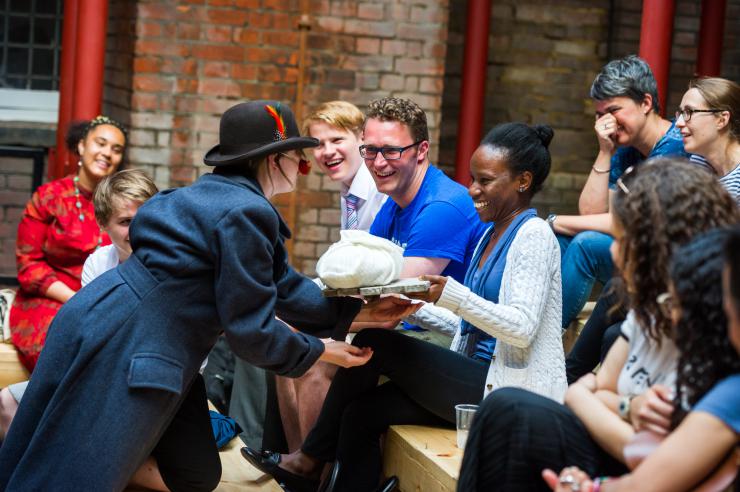
How Howarth Tompkins might be involved with getting people through or across this barrier still remains to be seen. But here is an interesting question: If it is possible, in Jubb’s words, for architects to become “theatre programmers as the theatre programmers become architects” (i.e., for artistic directors and architects to plan together spaces like the Courtyard with theatre companies like Littlebulb in mind) can they then also work more with audiences too? Can we get to a stage where audiences, using the tools at their disposal given to them by the architects and theatres, are able to create their own auditorium spaces and set the physical parameters with the actors for the performance that will then take place?
The sun’s up now on the Courtyard. Watching over it all before he goes off for another meeting, Jubb offers ideas of how the Courtyard might be used in other shows. Audiences could “Watch the shows from the inside the building itself” looking out onto the Courtyard’s stage, or the show could take place in the rooms, with the audience gathered in the Courtyard and being “drawn by artists about where to look.” It seems that the possibilities for the new space are infinite.
“In the conventional theatres,” muses Jubb, “the risk is that we are not really listening to how buildings and space impacts on an audience. Theatre should open your mind and you should have a space that does that.” Likely, the Courtyard could be that space. Also, we should listen to buildings and what they tell us. They have a lot to commemorate, a lot to say about the future. Let’s see how the past will merge with the present and future at BAC’s the Courtyard.

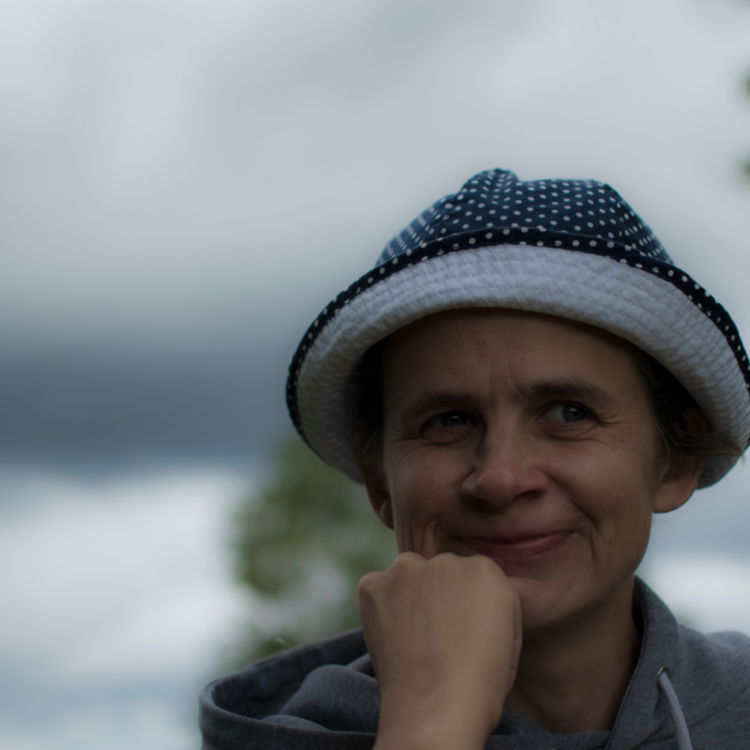
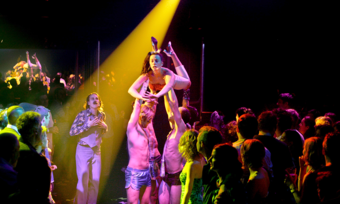

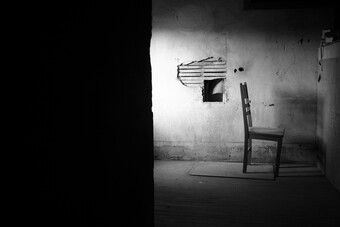

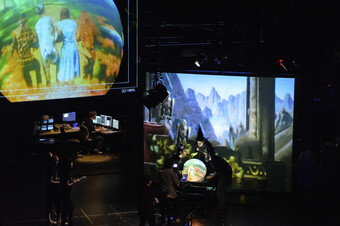

Comments
The article is just the start of the conversation—we want to know what you think about this subject, too! HowlRound is a space for knowledge-sharing, and we welcome spirited, thoughtful, and on-topic dialogue. Find our full comments policy here